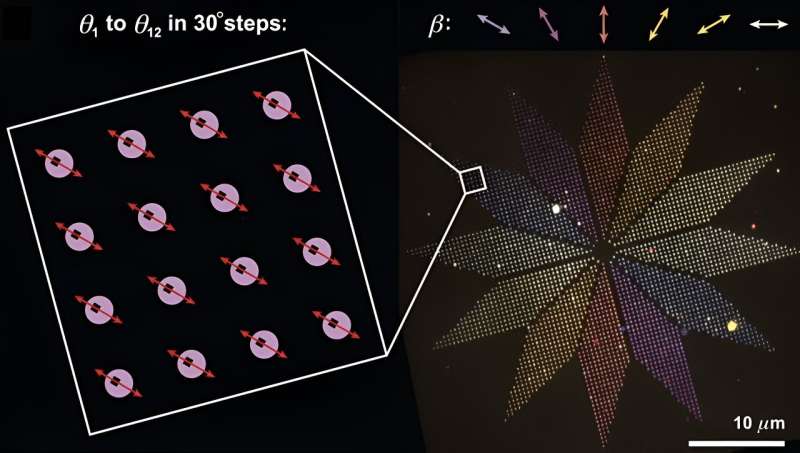This article has been reviewed according to Science X's editorial process and policies. Editors have highlighted the following attributes while ensuring the content's credibility:
fact-checked
peer-reviewed publication
trusted source
proofread
Capturing DNA origami folding with a new dynamic model

Most people are familiar with the DNA double-helix. Its twisted ladder shape forms because the long pieces of DNA that make up our genome are exactly complementary—every adenine paired to a thymine, and every cytosine paired to a guanine. Sequences of these four nucleotides hold the information needed to build the proteins in our bodies, but they also encode their own double-helical structure.
Since the 1980s, however, scientists have hijacked these pairing rules to build structures other than double helices. This field is called DNA nanotechnology, and its most popular implementation, DNA origami, lets researchers fold DNA into any shape, providing a powerful approach for building nanoscale devices and machines.
DNA origami involves putting a long piece of DNA, called a scaffold, together with hundreds of carefully selected short pieces of DNA, called staples, in a test tube, and letting them fold together into the designed structure.
The technology is remarkably efficient, with the whole process happening in one experimental step. Despite the apparent simplicity, the process is complex, and scientists do not have a complete picture of what is happening during folding. Regular microscopes have a hard time seeing DNA origami structures because they are so small, and those that can require the structures to be attached to a surface.
One way to try to understand this process is through computer simulations, using an approach known as molecular dynamics. Researchers have tried to use these simulations in the past to understand what goes on when DNA origami structures fold. However, existing models consider every single nucleotide and the resulting movements of the evolving structure over billions of tiny time steps. The process is computationally demanding, limiting the size of the structures and time over which the dynamics can be simulated.
To get around this hurdle, Gaurav Arya, professor of mechanical engineering and materials science at Duke University, and his doctoral student Marcello Deluca are taking a step back.
Rather than simulating every single nucleotide, they developed a new model that allows them to capture the dynamics of this process while only considering the behavior of groups of eight nucleotides. This simplification means that, while they are still able to simulate the structure for billions of steps, each of those steps can be much bigger, and each step is easier to simulate.
Using this approach in a paper published online April 8 in Nature Communications, Arya and DeLuca have shown that they can model the dynamics of folding hundreds of times for DNA origami over 8,000 nucleotides in size. The previous record for a single simulation was 770.
"Our technique lacks the molecular detail of existing models, but that's not what we're after here," said Arya. "We're interested in the global dynamics of entire complex structures as they self-assemble."
The results are already revealing many new insights into the dynamics of origami folding. For example, the study found that these structures start to look a lot like the final, folded structures very early in the process, but take a long time to crystallize into their final form. The study also suggested that a phenomenon called folding momentum, which is very important in protein folding, may be at play in origami folding as well.
Arya and DeLuca say this approach could eventually help the hundreds of other research groups working in this field optimize the folding of their structures. By being able to simulate the folding result of a design many times in a short period, scientists will be able to predict the end product and make improvements to their design before it ever has to be purchased and folded in the lab.
They also point out that this modeling approach could help speed up potential applications of DNA origami, for instance in drug delivery, as it gives a more comprehensive understanding of what's happening.
"DNA origami devices can be designed to automatically release trapped molecules once they are exposed to a certain environment, like the lower pH levels found inside a tumor," said DeLuca.
"But a major challenge to getting something like that approved is a sufficient understanding of these devices including how they fold and release their cargo. If we can paint a better picture, it might ease regulatory concerns for these types of therapeutics."
More information: Marcello DeLuca et al, Mechanism of DNA origami folding elucidated by mesoscopic simulations, Nature Communications (2024). DOI: 10.1038/s41467-024-46998-y
Journal information: Nature Communications
Provided by Duke University


















